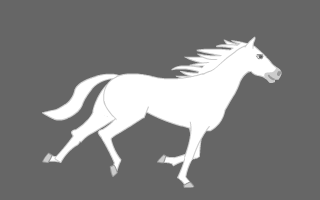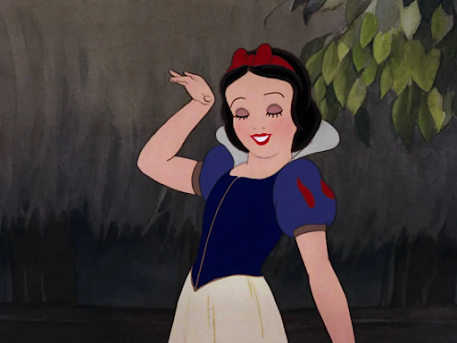I usually don't encourage the use of Reference Footage for use in Animation since that just constrains us to using Pose-to-Pose.
As a matter of fact, I got an email from someone on GUMROAD in July 2024 where he discouraged the use of POSE-TO-POSE as he calls it passe.
But for those who fiercely believe that Reference Footage is a must...... well....
I'm committed to my two-cents.
And when I say two cents, I don't mean criticism but rather I do some research into the topic on how it evolved into the technique we use nowadays.
But first, let's take a little travel back in time to the year 1934, shall we?
but for the sake for those historians who cherry-pick their research, we're going to use this SILLY SYMPHONY Short as our starting point.
As far as I know, this short was what spurred Disney's animators in the Mid-30s to start using the Reference Footage Technique.
Because this is what got Greenlit by Walt in 1934!!!Considering that people at the time were questioning Walt's reasons for this film to even be what it is today, there were many things to overcome.
But now's not the time to talk about Snow White.... I'll save that for a retrospective later in 2025.
But what the animators really want to do was to animate Snow White as realistic as possible.
Because this is what plagued Persephone in THE GODDESS OF SPRING:
Rather than be ashamed of the short, Disney has used THE GODDESS OF SPRING as a metaphor for when things don't go right and you need a reminder to use your Reference Footage for your semi-realistic human characters.Because while go get the motion of your character, if it was rotoscoped literally, then you lose the naturality of movement.
So what the animators did was just review the reference footage,
Then the animators reference the footage by drawing from each frame they observe.
This is not Adriana Caselotti. Rather, this is Marge Champion.
Then the animators reference the footage by drawing from each frame they observe.
Wonderful animation of Snow White provided by the great Grim Natwick.
But where does this take into account for why animators use Reference Footage in CG Animation?
Well, in the earliest days of Raster Graphics, Texture Mapping, and Ray Tracing, there were hardly ever any human characters.
The closest that we came close to having a human character first appear in CGI was Alan Powers, The Juggler in 1981But that Juggler looks so........ interesting.....
And not in a good way.....
Also, the Juggler was motion captured and CG Movies don't use motion capture unless it's for Live-Action projects.
Must be a Mantra at INFORMATION INTERNATIONAL INC. to have realistic looking humans in their CGI since they had the best modeling system in the 80s compared to all the other studios out there back in the day.
Best example I could find is Tony De Peltrie,
A 1985 Canadian CGI film about a displaced Pianist who, now alone, reminisces about the height of his career as the best Pianist in all the best Night Clubs in Quebec. John Lasseter commented on Tony De Peltie in his saying:
"Years from now Tony de Peltrie will be looked upon as the landmark piece, where real, fleshy characters were first animated by computer."
— Maclean’s, September 9. 1985)
Uh.... but that was in 1985.
Oh how times have changed. And so has modeling Human Characters in CGI.Notice the way Tony himself was modeled?
I can't tell if that is trying to stay away from the Uncanny Valley but considering how difficult it was to model Tony's face on a Clay Model, especially having digitize him into a Mainframe Computer in the mid-80s is astonishing... and I mean that in a good way.
But was his animation referenced from live footage in the way he was animated?
Who knows because I can't find any information about whether Tony De Peltrie is motion captured or keyframed.
If anybody has any info, leave a comment on this blogpost and I'll update when the time comes.
Anyhow, just like with Snow White in the 1930s, when it came time to do the animation for Toy Story in the mid-90s, the need to look back at Reference Footage to tackle something in CGI was required.
So how did CG animators do it?
Either they act in front of a Mirror
Or Videotape themselves or someone doing the action.
Can't find my Intended Kensuke Aida Camcorder photo so this will have to do.
VIDEOTAPE???? FOR 90s CG ANIMATION????
OH COME ON. THOSE ANIMATORS HAVE COMPUTERS. THEY SHOULD AT LEAST HAVE A WEBCAM TO RECORD REFERENCE FOOTAGE WITH THEIR SGI WORKSTATIONS!
COOL!!! NOW THAT'S WHAT I'M TALKING ABOUT!
Ok. The SGI INDY webcam thing was a little joke for myself as Modern Animators today seldom use Webcams for their Reference Footage.
What most animators use today is either their smartphones or a dedicated video camera.
it's time to reference the footage.
And by that, I mean choose between having a secondary Window or Monitor with QuickTime player or embed the video into MAYA or Blender and reference the poses that way.
Many an animator would prefer to embed their video into their project due to the budget of their workstations not lending themselves to having a secondary monitor.
So here's how us MAYA Animator do it:
First, create a secondary camera that acts as your REFERENCE CAMERA.
Move the reference camera away from your perspective view,
for better measure, Create and attach it to a category and set it to Reference.
This ensures you won't select it when you click and drag your mouse on your view when you want to select your controls.
Now select IMAGE PLANE,
and then select video.
Be sure to check your video to see if it matches your MAYA or Blender scenes Frame-Rate.
If not, go to Adobe Premiere Pro, or DaVinci Resolve, and export your video reference as 24 FPS.
Be sure to set the video file as a .MOV file as MAYA and Blender can be picky about what file type they prefer for their video references.
And now you have video reference.
Start animating away.
Of course, just like with rotoscoping, you can't exactly match your characters movements to the live action footage.
So do yourself a favor:
Modify your poses a little bit to differentiate from your footage,
Inbetween some poses,
Knock yourself away with whatever you can think of so that it looks cartoony or lively.
Yes, this post looks a little Incomplete.
I'll update it as soon as possible






























No comments:
Post a Comment